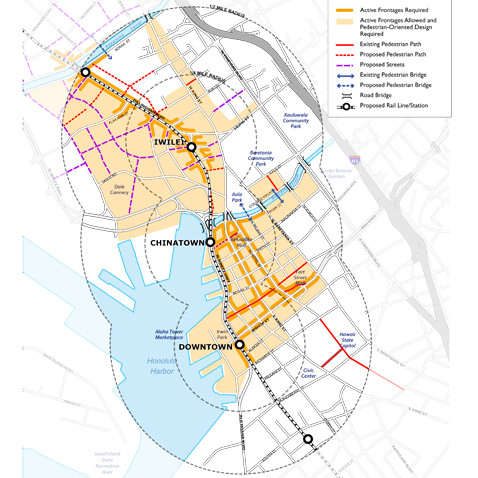Honolulu Transit Oriented Zoning
Dyett & Bhatia is preparing a framework for citywide zoning regulations for the City and County of Honolulu to integrate land use planning with the new $7 billion urban rail system. This project represents one of the most ambitious new urban rail systems currently planned in the country—construction of which is slated to begin later this year. The Honolulu High-Capacity Transit Corridor Project will provide faster, more reliable public transportation service in a 20+ mile corridor currently suffering from traffic congestion. Integrating land use planning and zoning with rail planning is essential to realizing the full potential of the multi-billion dollar investment. As a separate project, Dyett & Bhatia is leading planning and urban design for six station areas.
The 21 transit stations encompass a diverse range of settings and a wide range of typologies: the financial district with high-rise office buildings; low intensity suburban areas such as Kapalama; greenfield development areas; station areas where conservation will be a priority, such as Chinatown; areas that may transition from industrial and other uses to transit-supportive ones, such as in Kalihi; major points of origins and destinations, such as Airport and Convention Center; or shopping and tourist attractions, such as Ala Moana or Waikiki. One specific set of regulations cannot adequately address TOD needs and opportunities across all stations. The challenge is to translate broad land use policies and into a user-friendly, legally adequate, and effective set of regulations and procedures that implement the goals and policies of the TOD plans and create more livable communities that take advantage of the benefits of transit.
To ensure a streamlined approach and repetition of similar provisions in multiple places, an approach is to stratify stations based on typology, and identify provisions that: (1) are common to all or most stations, such as prohibition of certain kinds of uses (such as drive-through establishments within a certain radius of stations) or pedestrian-orientation of buildings; (2) will be applied as part of station typologies (such as suburban employment stations); and (3) will be unique to individual stations.
Ongoing
